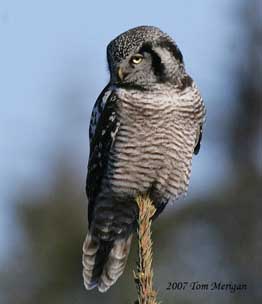
STRIGIFORME ORDER - STRIGIDAE FAMILY
Strigidae Family gathers 189 different species which show similar behaviours and varied appearances.
These owls are larger than the Tytonidae, and several criterions make them very different.

Typical owls have large head with circular facial disks and large elongated eyes. Many species have conspicuous ear tufts, and we can often see dark patches on the nape, similar to false eyes, mainly in Glaucidium owls and Northern Hawk Owls.
But as Tytonidae, the Strigidae have feathered legs, strong feet and powerful talons. Wings are large, and the brown or grey plumage is soft and thick, with downy feather’s bases. The cryptic colours of these owls allow them to be almost invisible when they rest in trees during the day.
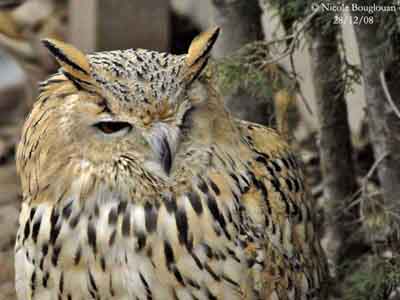
As in Tytonidae, the Strigidae show important asymmetry in ear size, allowing them to detect the prey only by the sound. The large, elongated eyes positioned well apart on the face give them a very good depth perception. The bill is fairly short and stout, with hooked upper mandible and thick bristles. Female is usually larger than male.
Most owl species are nocturnal and perform silent flight thanks to the soft flight feathers. On the other hand, some birds such as Glaucidium, Ketupa and Scotopelia owls are largely diurnals and their flight is not as quiet as that of nocturnal birds.
Strigidae frequent all the usual terrestrial habitats except the very high elevations and the arid treeless deserts such as the Sahara. They can be found on all continents except Antarctica.
Some species, such as the Burrowing Owls, live underground in burrows.
About 95% of species live in forested habitats where they find food and nest-sites, with the higher numbers in tropical forests.
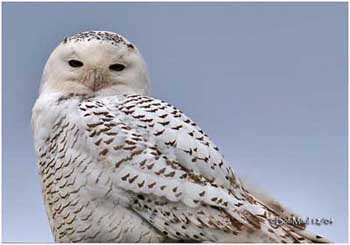
The most typical non-forest species is the Snowy Owl. It breeds in Arctic tundra, on the ground in high spots or on rocks. It may use sometimes abandoned nests.
The Strigidae are usually sedentary in their range, but some species migrate to wintering areas where they can find the same general structure of habitat as in breeding sites. They live from sea-level to 2000 metres of elevation. Some species may live up to 4700 metres in Tibet, 3700 metres in the Andes, 4000 metres in alpine plateaux in South America and 3500 to 4000 metres in Africa.
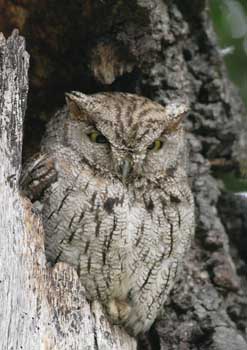
The nocturnal species spend the day perched in trees or concealed places for resting, such as foliage, crevices in cliffs or natural cavities. Their cryptic plumage make them invisible is motionless.
When disturbed, the owls may become aggressive near the nest when chicks are present. They attack or drive off the intruders which enter the territory. The largest owls often strike humans and can become dangerous for the eyes during the nesting period.
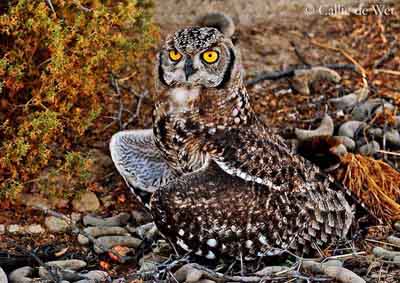
They often are solitary or in pairs. They hunt mainly at dawn and dusk, but also in the late afternoon. They feed on wide variety of vertebrates and invertebrates such as mammals (rodents), birds, reptiles, amphibians and insects. They pursue birds in flight, or dive on to the prey on the ground after a low flight. They are able to hear the prey, even as deep as 45 cm under the snow. These preys are stored during winter as within the nesting cavity or in a fork in tree. They may be stored during several days. When the stored prey is frozen in winter, the owl “incubates” it in order to warm the food. Some species take fish and hunt as fishing eagles.
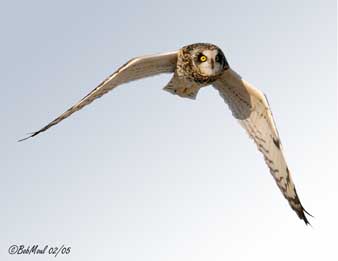
The two basic hunting methods are “sit-and-wait” from a perch, or “active-search” while flying low from the ground.
The Strigidae, as numerous birds’ species, regurgitate pellets made with the hard parts such as bones, claws, fur and feathers.
During the breeding season, the male utters vocalisations during one month before the nesting period, in order to attract a female or to renew the pair-bond with its mate. Displays include wing-clapping by slapping the wings beneath the body during the flight. Pairs fly and circle together over the territory, and the males perform courtship displays high in the sky. Courtship feeding is often observed, with female begging food as a young bird, and male performing wings and body displays before copulation.
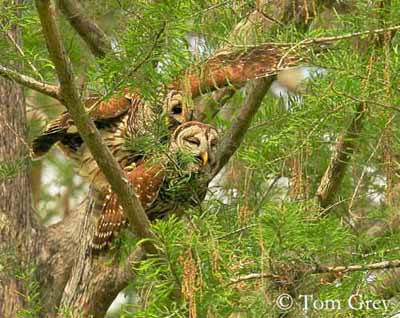
They nest in abandoned twig nests, in tree cavities, on cliff ledges, on the ground in burrows or on platform. They may use artificial nest-boxes.
The clutch contains from 2-4 white eggs, to 4-7 eggs and more if food resources are abundant. The incubation may last from 22 days in small species, to 32 days in the largest. Female performs all of the incubation and nesting duties, while the male hunts and feeds the family, transferring the prey to the female which then feeds the chicks.
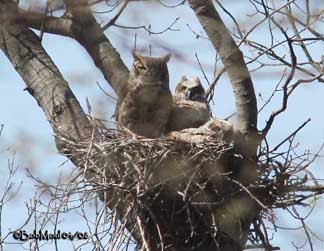
The juveniles of the largest species depend on parents for a long period, about five months. Other smaller species are dependent during 3 or 4 weeks after leaving the nest.
They perform post-breeding dispersions when they become independent.
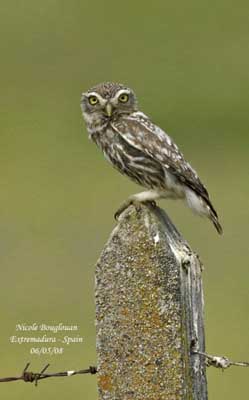
Since long time, owls invoke fear and superstitions among humans and these birds have often been linked with death. They play an important role in legends and myths, due to their vocalisations during the night.
According to continents and countries, the symbols vary from fascinating birds, guards of women’s souls, or birds possessed by demons, or with surnatural powers which presage the death of people who heard them. The list of symbols is very long…
Owls are threatened by persecutions, poisoning, habitat loss and forest fragmentation. Education of people, protection and conservation programs are in progress, in order to help these fascinating birds to live and to breed in the future.
Text by Nicole Bouglouan
Photographers :
Nicole Bouglouan
Tom Grey
His website : Tom Grey's Bird Pictures
Bob Moul
His website : Nature Photography
Callie de Wet
His website :Flickr Galleries
Tom Merigan
His website : Tom Merigan’s Photo Galleries
Sources :
HANDBOOK OF THE BIRDS OF THE WORLD Vol 5 by Josep del Hoyo-Andrew Elliott-Jordi Sargatal - Lynx Edicions - ISBN: 8487334253
Animal Diversity Web (University of Michigan Museum of Zoology)
Related article: Fish-owls